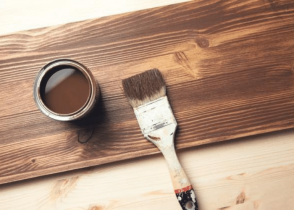Primer is a type of paint that goes on top of the wood to protect it and give the paint something to stick to. So it goes without saying that before you start painting wood, you need to apply a coat of primer.
But how many coats of primer on wood do you need to apply? And what type of primer should you use?
In this blog post, we’ll answer these questions and help you get your wood primed and ready for paint.
Keep reading to learn the following;
- Should you prime wood before painting?
- How to prime wood for painting
- How many coats of primer on furniture do you need?
- Is one or two coats of primer on wood enough?
- Tips for priming wood for painting
How Many Coats Of Primer On Wood Before Painting?
Two coats of primer on wood are sufficient to seal it. The first coat gets soaked on the surface and the second one replenishes the absorbed primer. You don’t need to apply too much or little, so two coats are enough. Make sure to let the first coat dry well then add the second coat.
Not that the actual number of coats can depend on the type and condition of the wood. Usually, two coats are enough. But sometimes more is needed. We’ll delve a little deeper into the type of wood surface later.
Should You Prime Wood Before Painting?
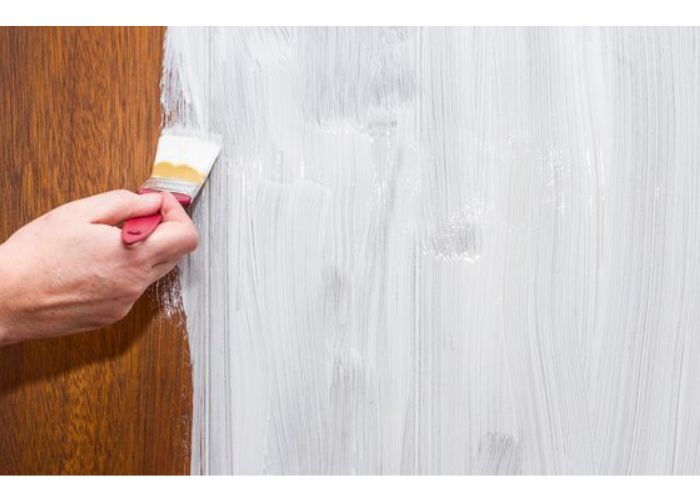
Yes, you should always prime wood before painting it. Priming helps create a smooth surface for the paint to adhere to and provides a barrier between the wood and the paint.
This is especially important if you are painting over bare wood, as the paint will have nothing to grip onto otherwise.
Primer is a resin mixed with solvent and a dash of pigment. The resin part of the primer will seal off the pores, creating a smooth surface and allowing the paint to stick effectively.
Therefore, if you skip the primer or use too little of it, expect the following;
- The surface underneath will begin sucking up the new paint color
- Visible blotch or imperfections beneath the paint
- Limited stain-blocking efforts
- Bleed-through of the wood’s natural color into your final paint color.
What Happens If I Use Too Much Primer?
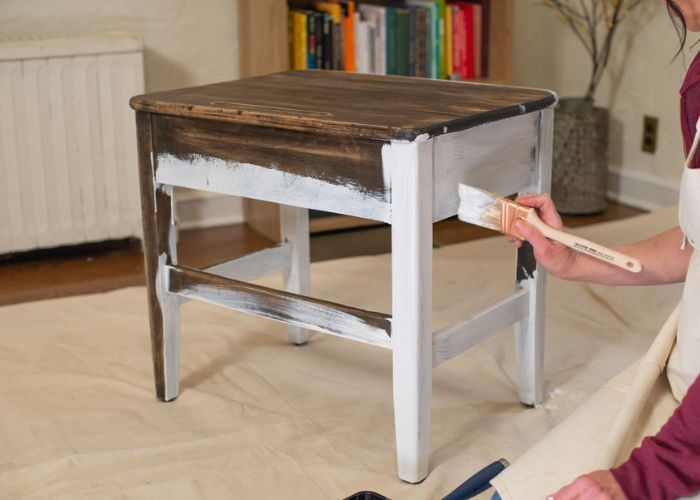
Over application of primer on the wood will cause peeling, chipping, and cracking of the paint. Just as using too little primer can show imperfections on the wood.
Moreover, a layer of primer that is too thick has a longer drying time. This means if you plan to finish your project faster, you won’t be able to stick to your timeline if you use too much primer.
Wood is also particularly fussy to paint since you will have a lot of imperfections to deal with. For example, a piece of furniture in a rustic style might have a lot of knots or uneven areas. Using too little primer can reveal those imperfections.
This is why you need to understand the type of surface that you are applying the primer on. Typically, two coats are just enough if you use an oil-based primer.
However, with latex or thinner primers, you might need multiple coats. Since the formula is thinner, you’ll have to make up for it in coats.
Does it matter if it’s Unfinished Wood or Previously Painted?
When determining how many coats of primer you need for wood, take a look at the surface. For example, is it bare wood or previously painted wood?
The main difference between the two is that bare wood is very porous. This means that bare wood primers will get absorbed a lot more than they would if they already had an existent layer of paint.
Previously painted wood has traces of paint color and will already have those primer molecules within its pores.
Even after sanding the painted wood, the final prepped result won’t have all the naked pores as bare wood. And it is much easier to apply primer to it compared to unfinished wood.
Still, it doesn’t mean you can skip on the primer if you are painting over old paint on wood. Proper preparation is essential for a long-lasting and smooth paint finish. Sanding the surface and applying a suitable primer will ensure better adhesion and prevent potential issues like peeling or flaking
You want the new paint to hold on to the wood for the longest time. Therefore, you must give it a solid latex spray primer base for the paint to adhere. Since you probably also want to cover old paint, get a stain-blocking primer for excellent coverage.
How Many Coats Do I Need Based on the Color?
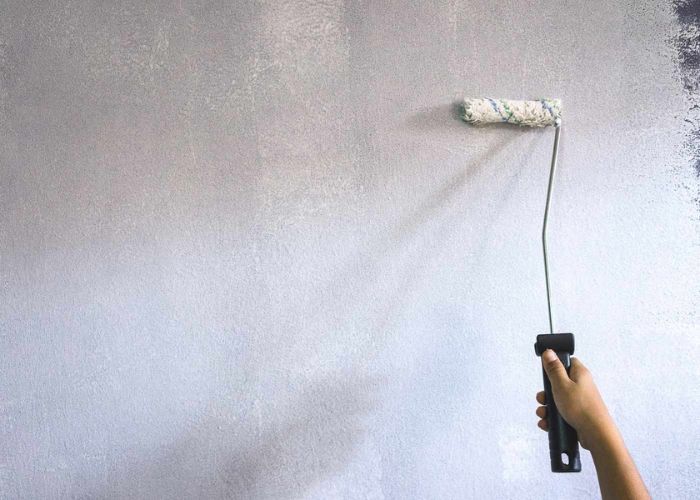
Depending on the color of the wood, you may need one coat, two coats, or multiple coats of primer and paint. Here’s the breakdown;
- Two coats of a quality tinted primer when working with stained wood to cover the stains efficiently. Even safer, go for a stain-blocking primer to hide even the most stubborn stains.
- One coat of primer if you’re priming and painting wood in the same color.
- Two coats of tinted primer if you’re painting in a different color. This way, you will cover up all of the paint, showing off from underneath the primer. (Here’s a guide on what it means when paint is tinted).
When Can I Use One Coat of Primer?
Usually, you need two coats of primer for a paint job. However, there are some circumstances where you will only use a single coat of primer. For instance;
- If you are painting over a very light paint such as white paint. In this case, the wood is mostly prepped and ready for its first layer of paint.
- If the surface you are painting has old paint in a medium to light tone.
- If you already used latex paint on the old paint job
- When using tinted primer. You can just add a bit of paint instead.
Take note; when you do this, but the paint still shows beneath the primer, then you might want to add a second coat of primer. This is usually the case when the old primer and new paint differ too much.
How Many Coats of Primer Will I Need Based on the Surface?
Each type of wood surface might need different primer coats as follows:
1. How many coats of primer on bare wood?
On bare wood, you will typically need two coats of oil-based primer. You might need additional coats for latex primer to get an effective bond. Two or more coats are ideal because bare wood is porous and will absorb most of the primer during application. Use the best clear coat over latex paint or primer for great results.
2. How many coats of primer on wood cabinets?
Unless the primer’s container specifies otherwise, you will need to apply two coats of primer on wood cabinets to create a strong bond. Use thick primer coats before applying your paint in case you’re working with unfinished wood cabinets.
The choice of primer also matters a lot. Here are the best wood for painting cabinets and primers for kitchen cabinets that we recommend.
3. How many coats of primer on wood furniture?
Apply two coats of primer on wood furniture before painting. Before adding the second coat, brush on the primer and allow the first coat to dry completely. Don’t use too thick or too thick primer coats. Rem to test the paint color on a sample area before applying it to the entire furniture.
4. How many coats of primer on exterior wood?
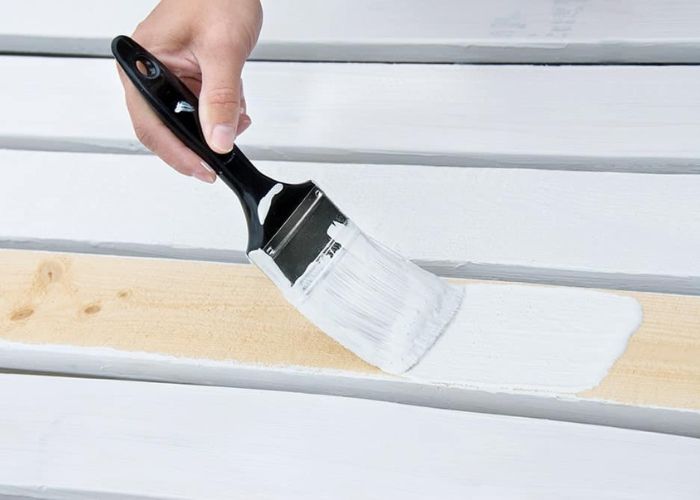
Exterior wood is more exposed to various elements, so you might want to use two coats of primer. This is a must if you are dealing with unfinished wood.
After the primer dries, you should always follow up with one or two coats of paint. Unless you are using self-priming paint, you should not leave the primer uncovered.
5. How many coats of primer on wood paneling?
When priming or painting over wood paneling without sanding, two thin coats of oil-based or water-based primer should be enough. Apply one coat, let it dry, and then proceed with adding two coats of paint.
6. How many coats of primer on stained wood?
If the wood you want to paint is stained, the number of coats you apply depends on the type of stain type. Usually, you will only need one layer when you choose a primer with a stain-blocking ability. However, if the stain is really bad and visible, you can apply two coats.
7. How many coats of primer on wood trim?
Ideally, you should apply two coats of primer when you are working with wood trim. After applying the first coat, allow it to dry for 24 hours, after which you can apply a second coat. When it’s fully dry, you can proceed with 2-3 coats of paint.
Does the Primer Have to Be Perfect?
No, the primer coats don’t necessarily have to be perfect; you may smooth things up with oil or latex paint afterward.
Still, you should make sure that the primer covers the surface and that there is no blotchiness. Primer coats shouldn’t be perfect, but they should be uniform for the paint to look smooth.
The key here is preparation. Additionally, the finish you apply after priming matters as well.
How to Apply Primer Paint on Wood
The number of layers you will need on wood will also depend on how you prime it. The smoother the surface is, the easier it will be for your primer to stick.
Supplies for priming wood for painting
The first step is obviously to gather the priming and painting supplies. You can get the following supplies from the paint store:
- Painting mask
- Sandpaper
- Several brushes (primer and paint need different brushes)
- Primer
- Paint
- Plastic cover to protect your clothing
Once you come back from the paint store, you may start with the priming process.
How to prime wood for painting
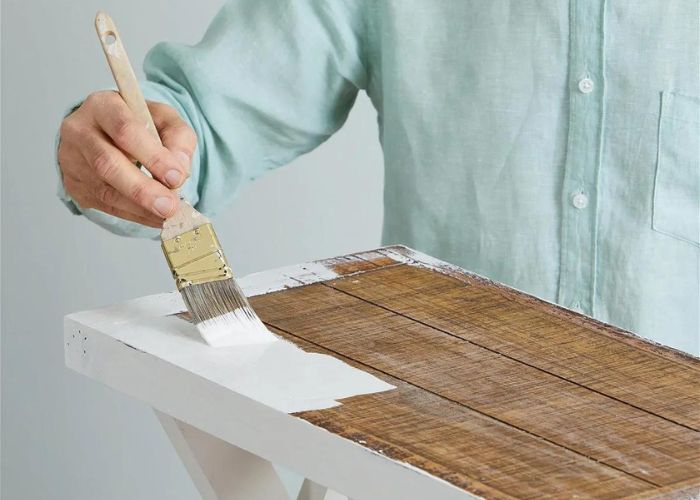
Step 1: Sand the wood
Whether it has previous paint color on it or not, sanding the wood is a step that you should not skip when applying primer.
You must make sure the wood grain has an even texture before going in with the primer and the new paint color.
Step 2: Apply the primer sealer
At this point, you should know how many coats of primer you should apply. Try to find the right balance of primer and paint so that you obtain optimal coverage.
You can skip the priming process and add the paint directly if you use self-priming paint. This tip is particularly helpful if you are stranded can you mix primer and paint?
Step 3 (Optional): Apply the second coat
After waiting for the first coat of primer to dry, you may apply the second coat.
If the first coat was uneven, this one will finish off the surface and prepare it for the paint color.
Step 4: Apply the paint
Once you are done with the primer, the final step is to add the paint. Make sure that the primer has properly cured before going forward with the paint.
Depending on the surface and the paint, you might have to apply a single coat or double coat of paint.
Other Posts: How Much Does a Gallon of Paint Weigh?
Types of Primers to Use
The type of primer you use will often determine whether you need one coat of paint and primer or two. Here is how much primer you should use based on the type.
– Oil based primer
Oil-based primer is very often the standard when it comes to painting wood. Due to its thickness, one coat of oil-based primer should be sufficient on previously painted surfaces.
Check out this comprehensive latex paint over oil-based primer guide if you’re looking to apply latex paint.
– Latex-based primer
Latex primer is also referred to as water-based primer. This means that it is not as thick as oil-based primer. As a result, you will have to use two coats of latex primer for it to stick to the coat of paint effectively.
– Shellac primer
Shellac is known to be the best stain-blocking primer, as it is quite thick. As a result, if you are painting surfaces with a similar paint base, such as Shellac over acrylic paint, you will only need one coat of primer. This characteristic not only saves you time and effort but also ensures effective coverage and adhesion for a successful painting project.
– Paint and primer in one
Lastly, if you use paint with primer, you won’t have to add a coat of primer anymore. Instead, you may just proceed with the first coat of paint.
FAQs
Should you sand between coats of primer on wood?
Yes, you should sand between coats of primer on wood. The purpose of sanding is to make sure that the layers of primer stick better to one another and the wood surface. If you don’t sand between coats, the primer may not adhere properly, and your paint job will suffer as a result.
How long should you wait between coats of primer?
If your primer is water-based, you’ll need to wait at least three hours before applying another coat. This gives the primer time to dry and set so that your subsequent coats can go on smoothly and evenly. Oil-based primers take up to 24 hours to fully cure, so plan accordingly.
Is one coat of primer enough?
As long as the primer applies uniformly over the previous color, then one or two coats should be fine. If you’re unsure, or if the primer isn’t applying evenly, a second coat may be sufficient. It is not necessary to over-apply the primer with so many coats.
Do you need two coats of primer?
You need to use 2-3 coats of primer to ensure a good bond between the new paint and the wall and cover up any previous colors, especially if they are red, orange, or a strange outdated color. In short, you will typically need 2 coats of primer for most painting projects.
How thick does primer need to be?
Primer should be thinned with the appropriate thinner so that it covers the surface evenly and form a film. In most cases, primer needs to be applied in thin layers to penetrate the surface well, creating a smooth surface for the paint to adhere to.
How should primer look on cabinets?
Cabinets showcase minor cracks or damages after the first coat of primer. The first coat fills in the smaller imperfections, and the second coat seals everything in and helps prevent the paint from chipping. Make sure to let the primer dry completely before moving on to painting.
See Also: How to remove oil based primer from skin?
How Many Layers of Primer on Wood Summary
Two coats of primer will be sufficient for any kind of wood. Of course, there are certain circumstances when you can get away with just one coat of primer before adding in the paint, but the second layer will smooth any imperfections.
Make sure always to remove the existing paint naturally first and then add the primer. This will ensure that both the primer and the paint will adhere properly, without any risk of peeling.

